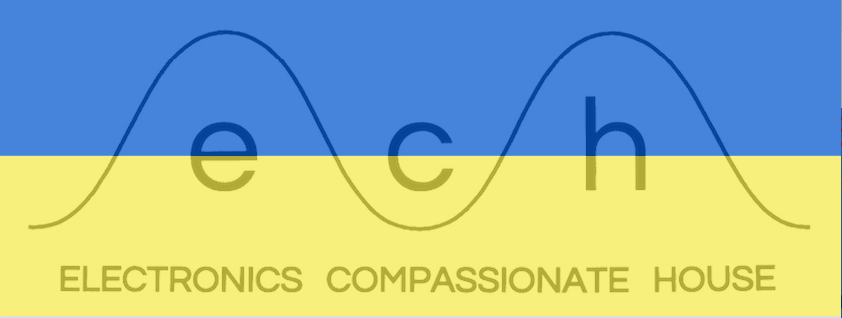 |
| Cretone Combo Organ |
A local band recently purchased a used (reputedly by Blue Rodeo - but many used organs I have purchased were apparently once owned by the semi-famous, a fact often thrown in the mix when it becomes obvious that two of the dividers are dead and the vibrato doesn't work) CRETONE COMBO ORGAN. This little number was a made-in-Japan variant of a TEISCO organ. Combo Organ Heaven has some pics of this line and you can see the similarities, particularly the TEISCOCHORD G and TEISCO NOMAD 61.
 |
| Cretone Combo Organ insides w. top octave removed |
Here it is out of it's enclosure... quite small, reasonably light and with some nice features. The knob on the far left selects either a single octave of bass or two octaves of 'accompaniment' (red rockers). This could be useful as it gives more tone combinations than usual on a combo. It has separate bass and 'solo' output jacks which can be used to great effect on stage.
 |
| Cretone Organ back-plate |
This particular organ had been somewhere damp for quite a while (shame on you Blue Rodeo) and was showing signs of age. One key was popped up (but still working) and the rockers and pots were VERY dirty. There was a problem with intermittent volume jumps from the output. Many keys only played one of the footages (4' but not 8' or 16' for example) and the highest notes crackled like mad. The 'sharps and flats' were very sensitive and the lightest touch would sound the note. A few mylar caps had broken leads and were affecting the filtering of certain tones. And it played the radio. This made it basically useless!
On the plus side - all the dividers seemed to be working and the oscillators were all in tune. That is a big plus since I could find no schematics for this particular machine (though most combo organs share a similar architecture) and transistors can be prohibitively expensive if bought from the wrong sorts of people.
 |
| CRETONE oscillator boards |
Here is a pic of the 12 oscillators. The board on the far right is different and could be a separate circuit for the bass or Vibrato (a la VOX Jaguar). The preamp was up top on the 'tone board' with all the caps, coils and resistors associated with the filtering and signal mixing (shown below).
 |
| Cretone Organ Filters (left) and preamp (right, cut off) |
Removal of the metal plates above the keys revealed octave-length batches of keys attached to sheet metal assemblies. This simple design coupled with switches under the body of each key and a felt covered rail that a little metal finger catches (to set the vertical height) comprised the ACTION of this organ. This seemed a cheap but workable solution that didn't involve dozens of tiny springs! The possibility of metal fatigue eventually cracking the cantilever spring used in this design seems the main drawback. Otherwise I liked the quick and bouncy feel of this organ.
I reset the tension of the keys by gently bending the spring of each key at the base. This was time consuming but fixed the 'jumpy' nature of the black keys and 'tightened up' the action.
 |
| CRETONE Organ broken key |
The bad key was repaired with pliers and delicacy. Fortunately the metal underneath was bent and not broken. This was a best case scenario! Various semi-crafty solutions could have been found due to the simplicity of the mechanism, though.
Repeated judicious cleaning of all available contacts fixed most of those problems with the exception of a few cranky rocker switches. Cleaning of the VOLUME PEDAL ON/OFF switch fixed the intermittent volume jumping (this is similar to a problem I encountered with a JUNO 106 where a dirty LO/MED/HI output switch was creating symptoms similar to a bad VCA chip).
 |
| Cretone Organ guts |
All of the key switch contacts were sealed in a plexiglass and metal enclosures under the keys. This piece was clearly designed to KEEP DIRT OUT FOREVER and therefore require no cleaning. Unfortunately there seemed to be some problems with a few keys and there was no reasonable way to access the contacts.
 |
| Cretone Organ key contact signal routing |
There were resistors associated with each key (each switch had two sets of contacts triggering different voices) soldered to a thin board making up one side of this box. Resoldering many of these points (an awkward situation due to the density) cured many symptoms including 'bad contact', and brought back most of the lost voices. The white noise associated with the highest two keys could be caused by degradation of these resistors which sit a centimeter from the hottest portion of the power supply.
Cleaning of the (I presume) gain trimmers in the preamp and refreshing old solder cured the radio noise problem.
More cleaning, a few new capacitors and more cleaning brought it 95% there. There was a budget and time sensitive nature to this project and the organ was deemed worthy of the context it was to be used in. It was now entirely playable and reliable and only refused to play 8' voices on the second D while set to 'acc'. These days that sort of thing is considered "vintage character". More investigation of the contact box or checking the final divider on the D board would most likely have fixed that problem. A full recapping of the filters, preamp and power supply would not hurt either. A new rocker switch could be sourced and shipped but all of this was not in the budget! I am nonetheless greatly pleased that an instrument was resurrected from an unplayable condition and is now being used!
Total time 3 hr, + $2.99 for chassis bolts that had rusted out.
